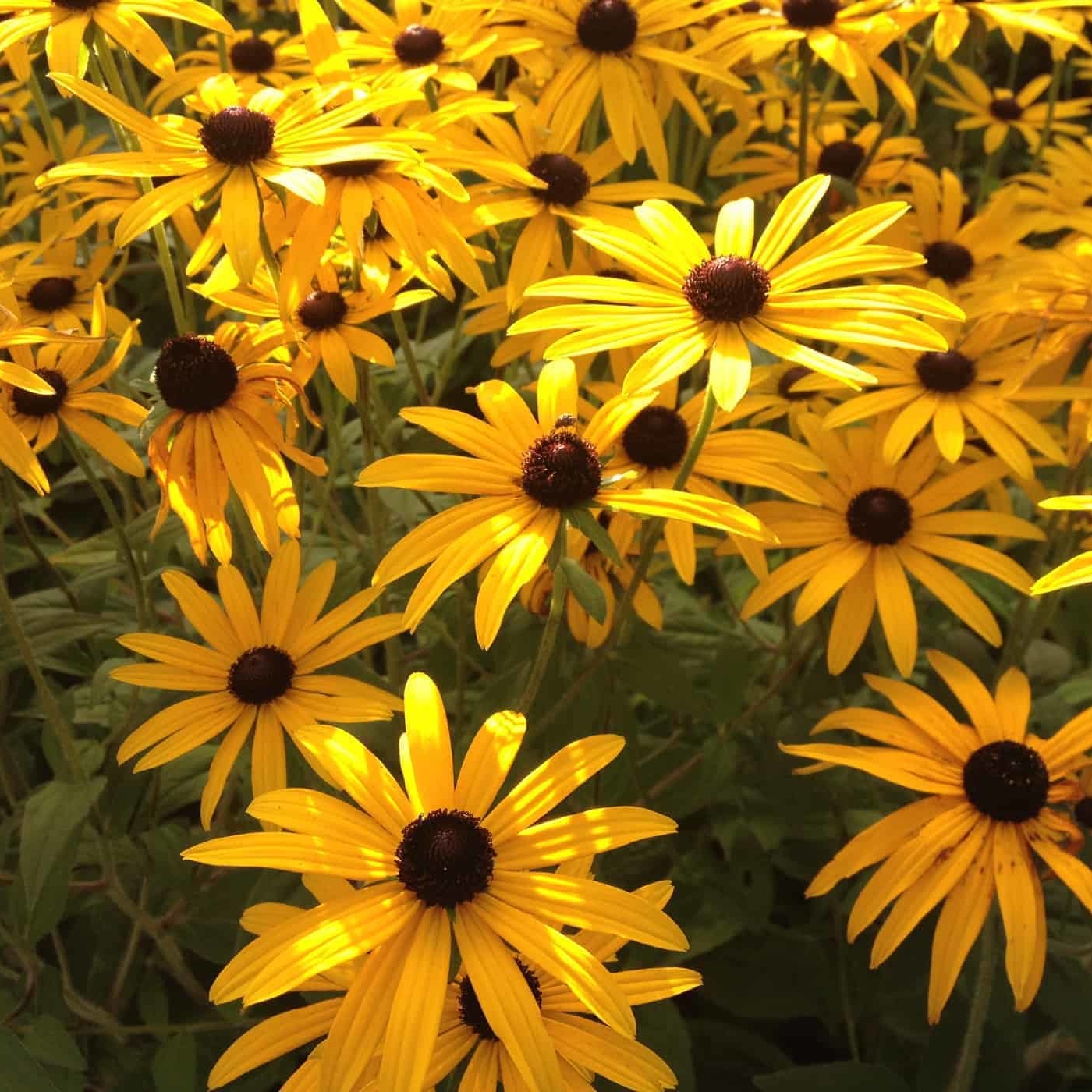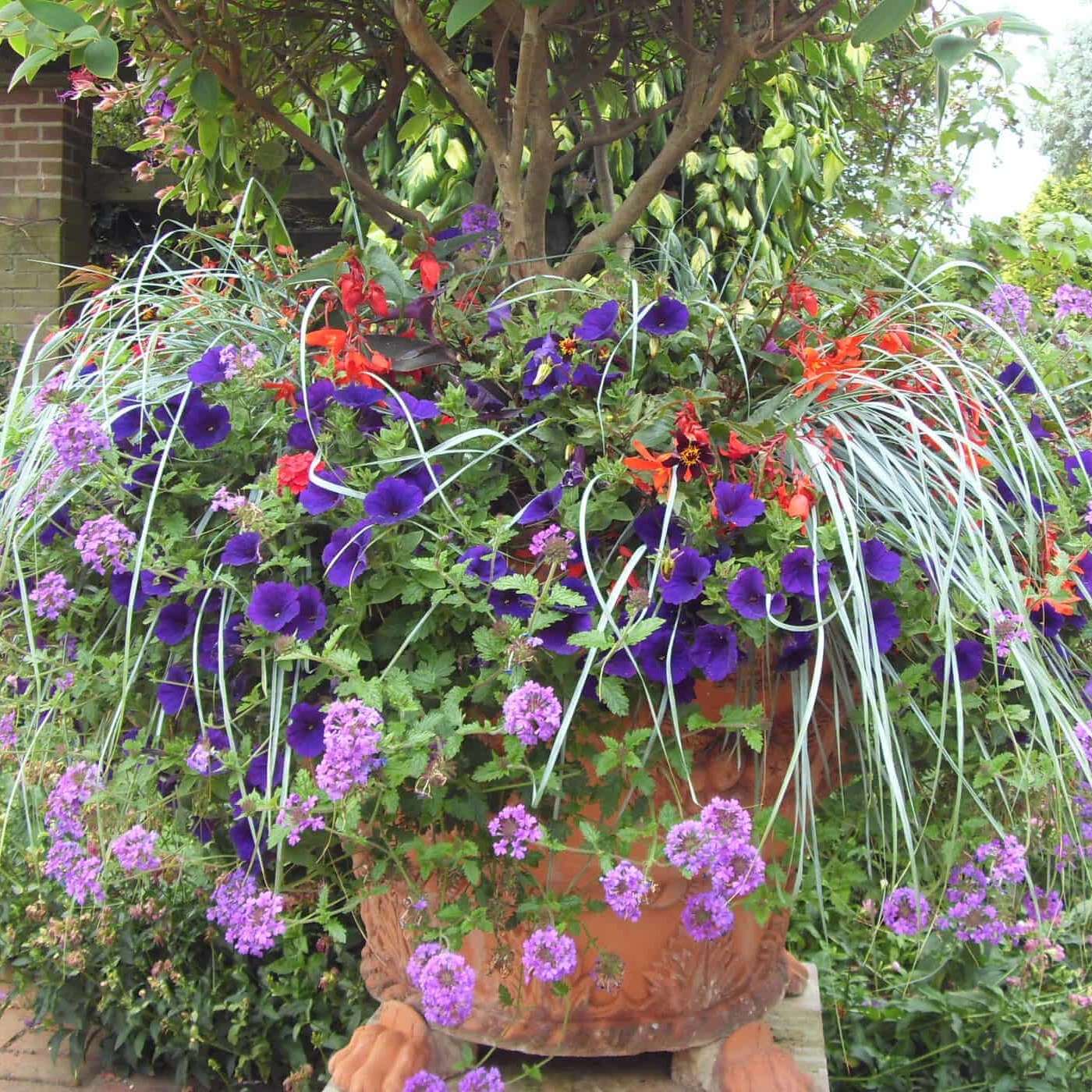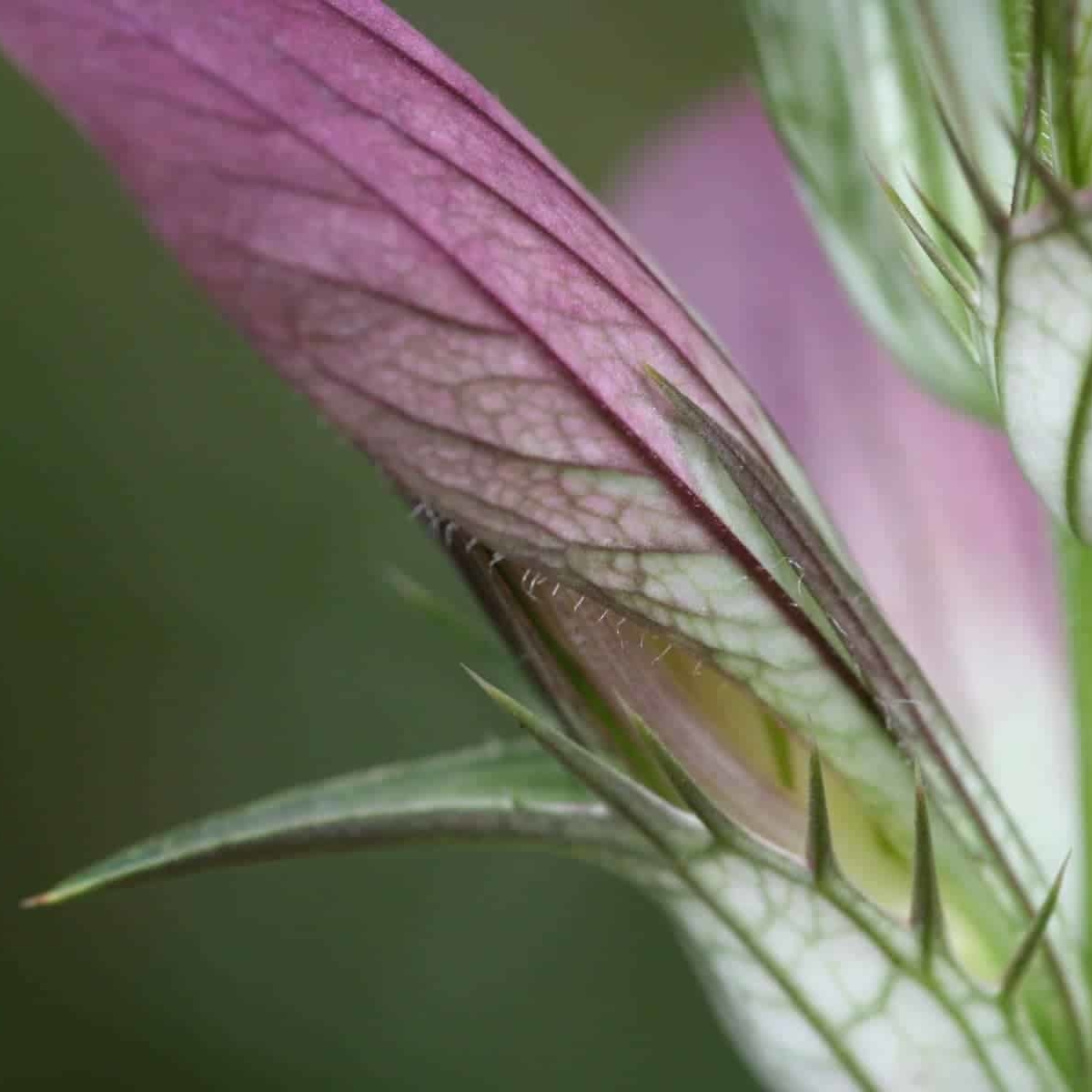Zingy spring plant combinations
It’s late April at RHS Garden Wisley, and spring is in full swing. The last of the cherry blossoms have faded, the trees are bursting with fresh green leaves, and painterly swathes of tulips bring a rush of colour. From trees to bulbs, biennials to perennials, here’s a handful of zingy spring combinations, and plants that pop all by themselves.
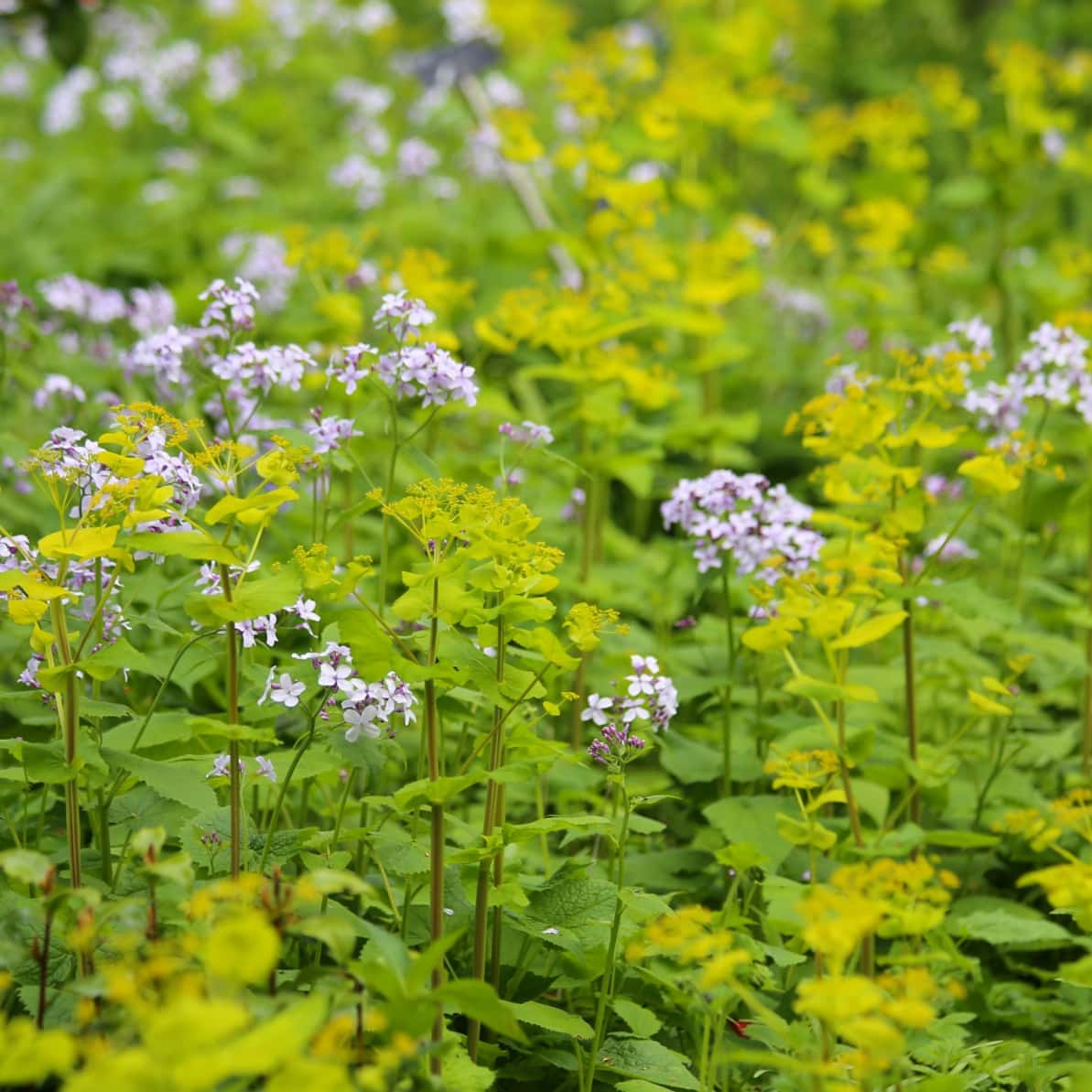
Lunaria rediviva is the perennial honesty. Starting as a clump, it spreads not too vigorously to fill an area and mingle with other plants. Here, the lime green biennial Smyrnium perfoliatum (perfoliate alexanders) seeds through it. Two vigorous plants that brighten up a shady spot, tolerating fairly dry conditions. Similar to that of the common annual-biennial honesty seen in hedgerows (Lunaria annua), the perennial species has dreamy silver mother-of-pearl seed pods that last from autumn through winter, elliptical in shape with gracefully pointed ends.
Smyrnium perfoliatum is a prolific self-seeder, but is easily pulled up by hand. Below, it’s created neon perfection with Euphorbia griffithii ‘Fireglow’.

From a similarly temperate maritime climate in the American Pacific Northwest, comes Erythronium revolutum. I’ve grown this plant from seed this year, with 100% germination success under a thin covering of grit in a fairly breezy cold frame, thanks to a few panels being smashed by storm Unice. From experience, anything with this level of germination success in unsheltered conditions, will likley self-seed in the garden. I’m just at the start of my journey growing erythroniums, many of which prefer sheltered conditions and organic-rich woodland soils, which I can’t provide. But many do seem to be tolerant and adaptable to other conditions, so this is a group of plants certainly worth experimenting with. Keith Wiley has a fantastic collection at Wildside Garden in Devon.
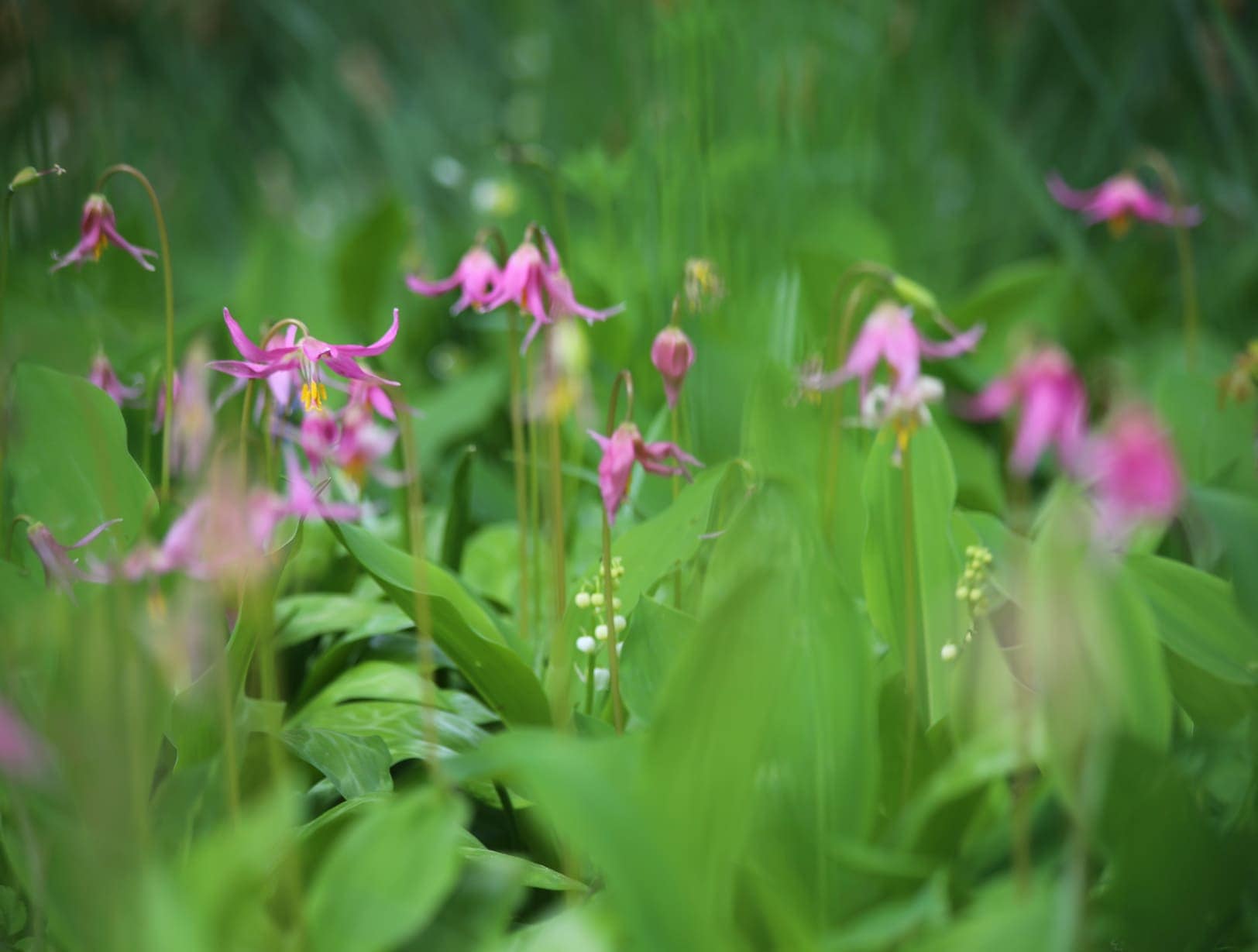
Cornus kousa, known as Szechuan strawberry, are generally summer-flowering trees, with strawberry-like fruits in autumn. ‘Angyo Issai’ is a particularly early-flowering cultivar, also available as ‘Angyo Dwarf’. Its creamy star-like flowers sit well with the warm butter yellow of the spring-flowering Rosa ‘Helen Knight’, a hybrid seedling of Rosa ecae. Another great early flowering yellow rose is the popular Rosa xanthina var. spontanea ‘Canary Bird’.
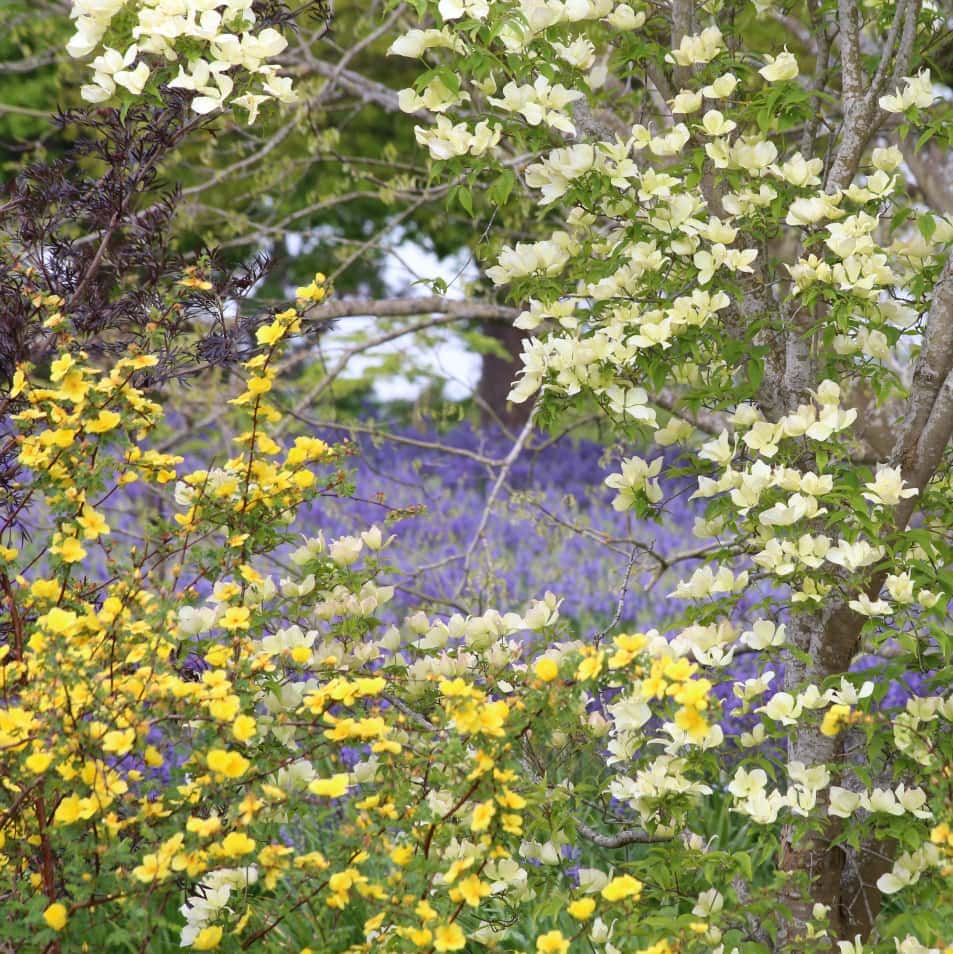
Paeonia daurica subsp. mlokosewitschii (molly-the-witch) is most commonly known and described to be yellow-flowered. In the wild, this plant is found in just one valley, around Lagodekhi in Georgia, where some sources suggest it occurs in both yellow and pink forms side-by-side. At Dixter Spring Plant Fair a few weeks back, Copton Ash Nursery had a range of young seedlings for sale, with leaves ranging from lime green through to distinctively pink-flushed. These, they said, will be the pink-flowered form. I picked up a few with a range of leaf colours to grow on at home. They’ll take a few years to flower, but certainly worth the wait.
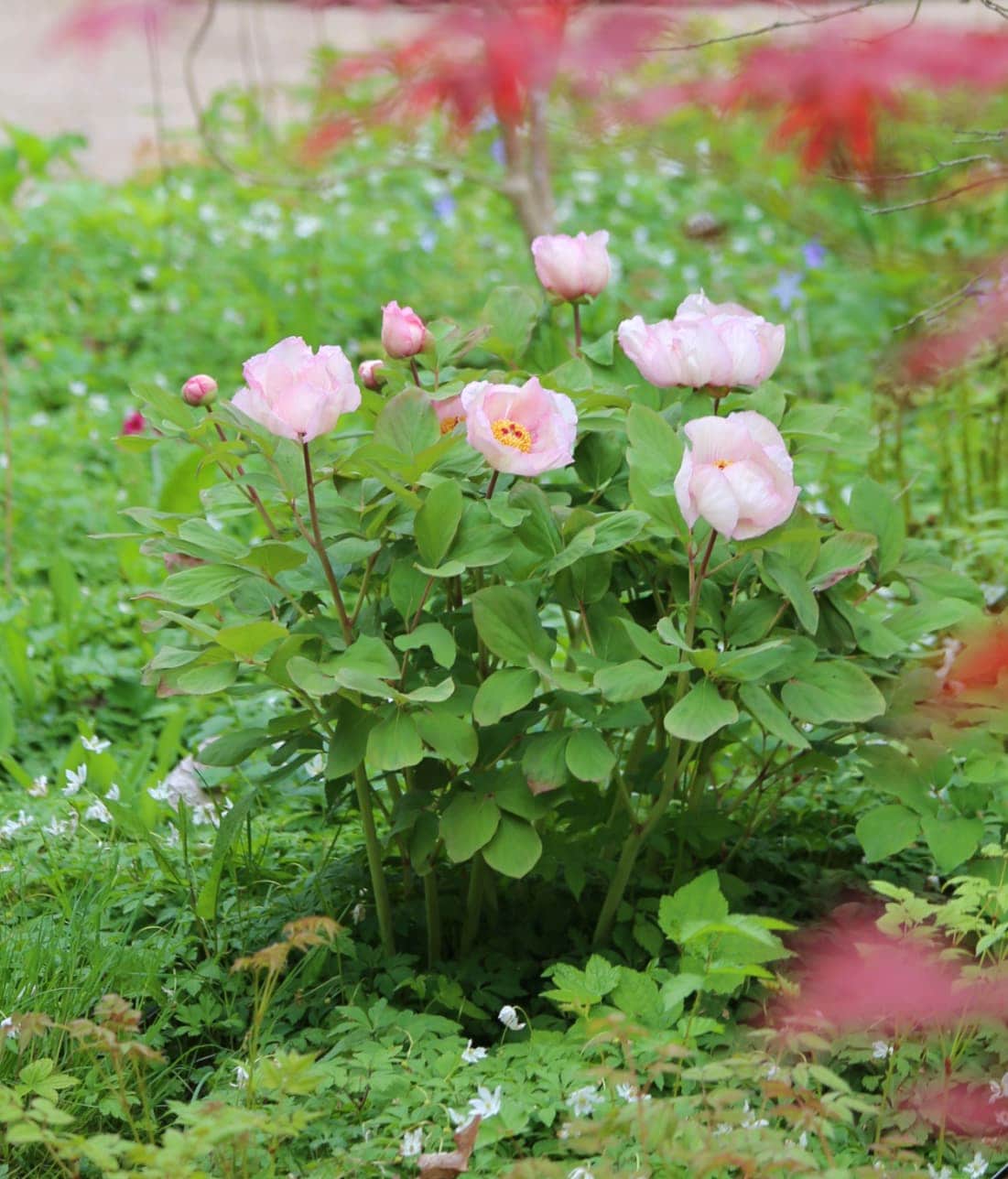
Over in the Wildlife Garden, Geum ‘Prinses Juliana’ shines for months, with long flowering Muscari armeniacum, the grape hyacinth. The evergreen copper foliage of Libertia peregrinans, the wandering Chilean iris, is distinctive in any season.
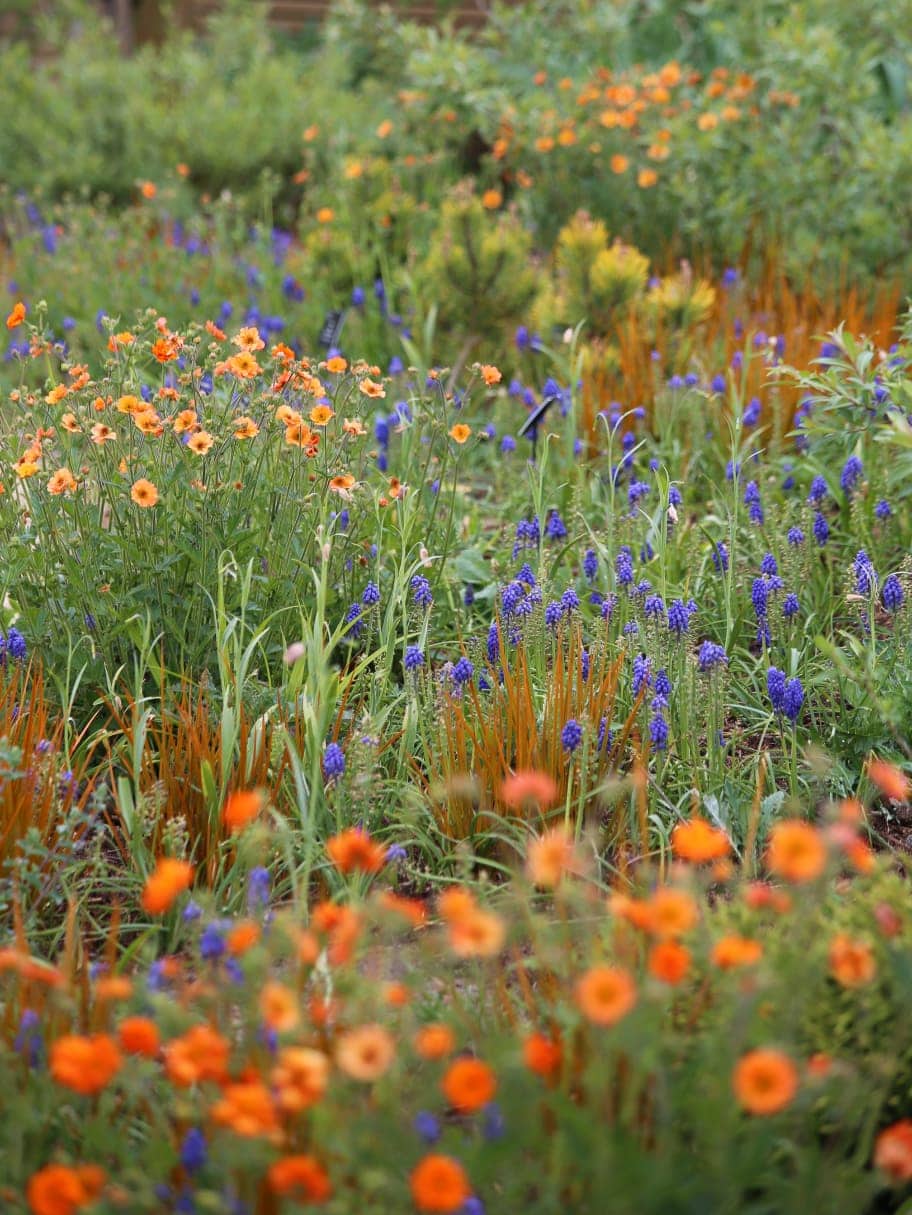
All adapted to damp meadow settings but fairly tolerant of drier conditions, Camassia quamash, Euphorbia palustris, Lychnis flos-cuculi create a vibrant combination.
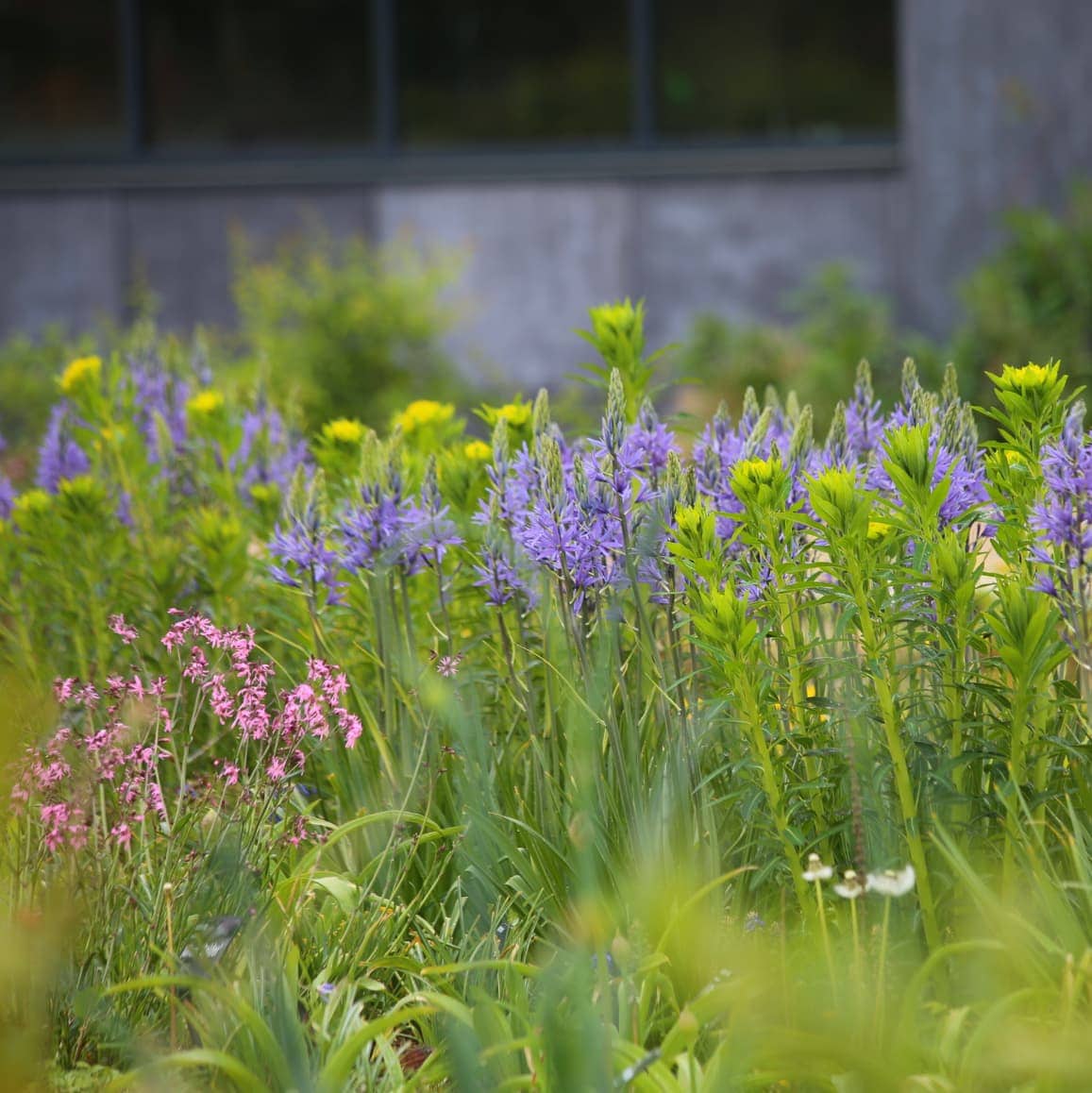
At this time of year, the pollen-producing male cones on pines are forming ready for the wind to carry their pollen. What we know as pine cones, are actually the female cones that tend to mature and drop to the ground in autumn. In the Wisley Exotic Garden, the males cones on Pinus patula are glowing like embers. This is the Mexican yellow pine, with distinctive drooping needles and vibrant rusty bark. Best suited to dry and impoverished soils, Wisley Curator Mathew Pottage explained that on our typically fertile soils and relatively wet climate, they can grow too quickly and become prone to falling over. One for your most sun-baked, hostile spot.
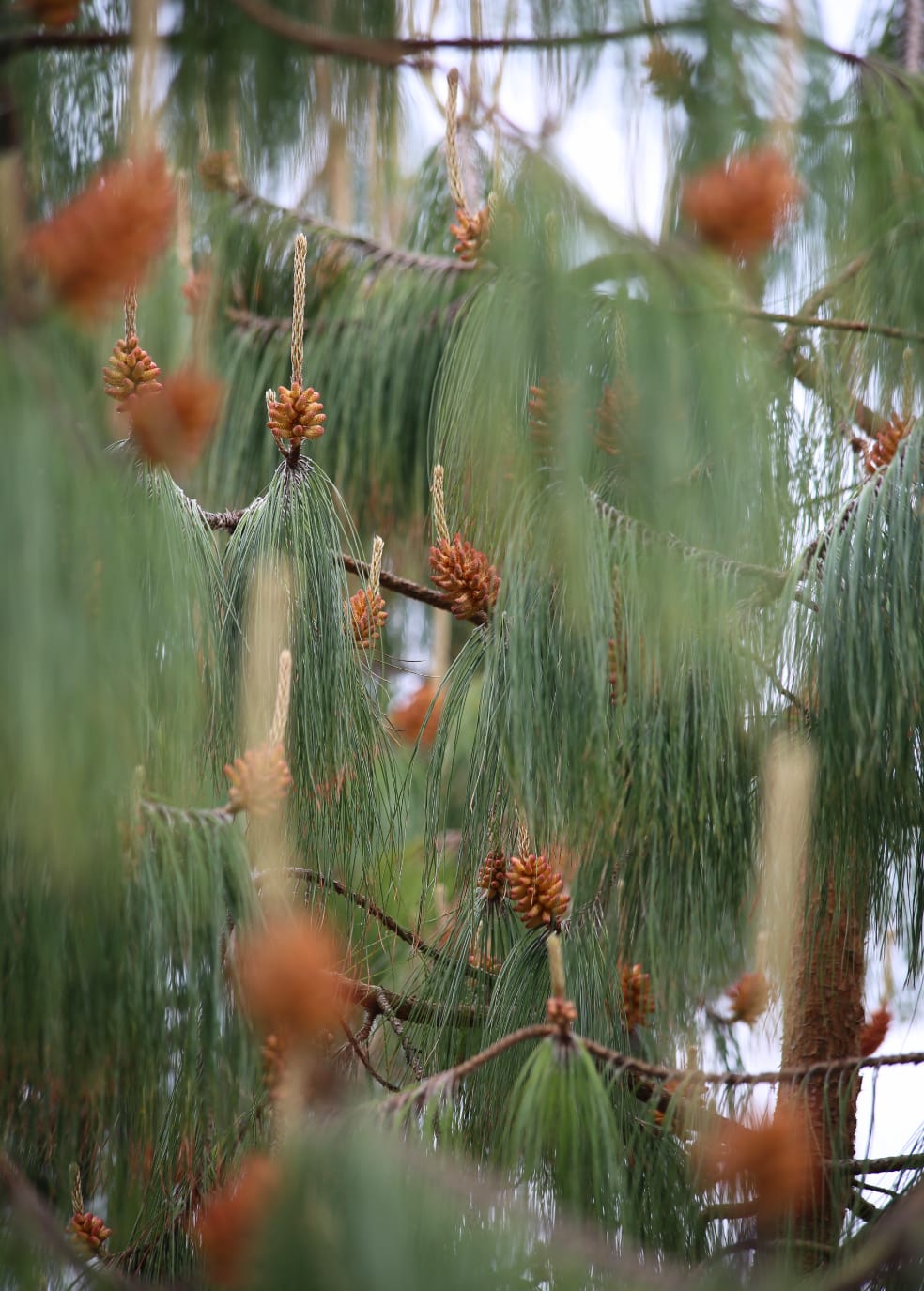
Ajuga reptans is a characterful British native, known as bugle. You may find it growing wild on damp grassy moorlands in the south-west, alongside purple moor grass (Mollinia) and rushes (Juncus). It grows here in a dampish spot with Carex elata ‘Aurea’.
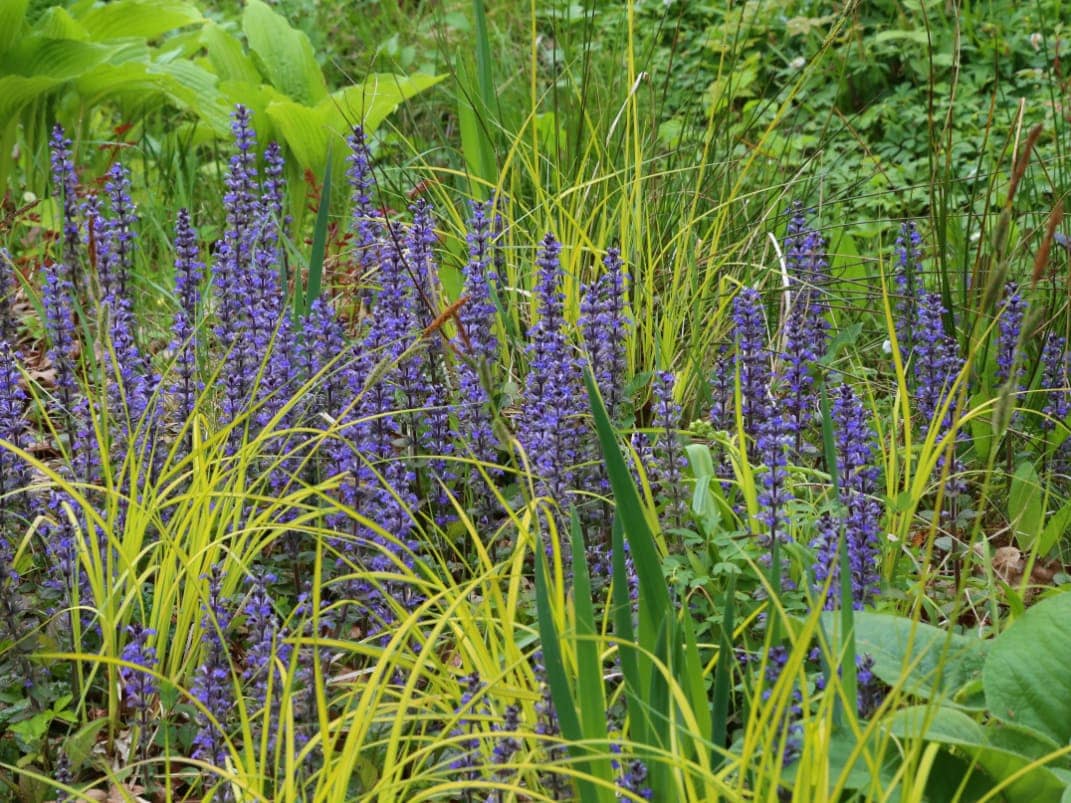
Photography by Owen Hayman
Owen Hayman
Owen joined the Bestall & Co planting and aftercare team in spring 2019. He is an RHS qualified horticulturist, holding a full Level 3 Diploma in Horticulture, and recently came in the top 3 at the Northern Regional Final of The Young Horticulturist of the Year 2019. After first doing a foundation diploma in Fine Art, he went on to gain a degree and masters in Plant and Soil Science from the University of Sheffield in 2014. Owen worked as a researcher on various field research projects in Alaska, Panama and Borneo. When not away in the field, he became obsessed with visiting gardens and nurseries across the British Isles and the Netherlands, developing his own garden, and then taking on a walled allotment garden as a personal project. He realised his true passion was in horticulture, and so moved away from academia and into the world of specialist plant nurseries and professional gardening.
Owen is now studying the Wisley Diploma, but continues to write articles for us on a monthly basis, and we're delighted to maintain contact with such a passionate and knowledgable plantsman.

